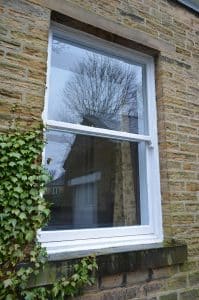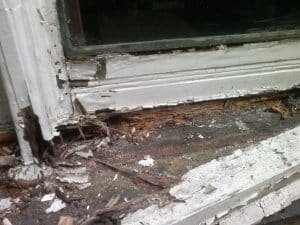Understanding Window Sills: Identifying Types and Knowing When New Joinery is Required
Window sills are often overlooked but essential components of any window structure. They are crucial in directing water away from the building and providing a platform for decorative elements or functional use. In this article, we’ll explore the various types of window sills, signs indicating the need for new joinery, and considerations for replacement. This article will also identify different types of window sills and explain the importance of recognising when new joinery is necessary for maintaining the integrity and aesthetics of your windows.
Types of Window Sills –
- Stone Sills: Commonly found in historic or traditional buildings, stone sills offer durability and aesthetic appeal. They are typically made of natural stone such as limestone, sandstone, or granite and are known for their timeless elegance.
- Wooden Sills: Wooden sills are prevalent in both older and modern constructions. They are typically made of hardwood or softwood, with hardwood sills offering greater longevity and resistance to moisture and decay.
- Concrete Sills: Concrete sills are often used in contemporary construction projects due to their affordability and durability. They can be cast in various shapes and sizes to suit different architectural styles.
- Metal Sills: Less common but occasionally used in commercial or industrial buildings, metal sills offer strength and resistance to corrosion. Aluminium and steel rank among the most commonly utilised materials for metal sills.
Window Sills: Signs That New Joinery is Required –
- Visible Damage: Cracks, splits, or rotting in wooden sills, or chips and deterioration in stone or concrete sills, are clear indicators that new joinery may be necessary. These issues compromise the structural integrity of the sill and can lead to further damage if left unaddressed.
- Water Damage: Water stains or signs of moisture on or around the window sill indicate water infiltration, which can lead to rot, mould, and decay. If the damage is extensive, replacing the sill may be the most effective solution to prevent further water damage to the surrounding structure.
- Pest Infestation: Wood-boring insects such as termites or carpenter ants can cause significant damage to wooden window sills. If you notice signs of pest infestation, such as small holes, sawdust, or insect activity, it’s crucial to address the issue promptly and consider replacing the affected sill.
- Structural Instability: A window sill that is sagging, uneven, or showing signs of movement may indicate underlying structural issues. In such cases, replacing the sill may be necessary to ensure the stability and safety of the window assembly.
Considerations for Replacement –
- Material Selection: When replacing a window sill, consider the material’s durability, aesthetics, and compatibility with the existing window frame and surrounding architecture. Hardwood sills are ideal for their longevity and natural beauty, while concrete or stone sills offer durability and a classic appearance.
- Professional Installation: Replacing a window sill is a precise and skilled task that requires careful measurement, cutting, and fitting. Hiring a qualified carpenter or joiner with experience in window sill replacement ensures a seamless and structurally sound installation.
- Weatherproofing: Proper weatherproofing is essential to prevent water infiltration and ensure the longevity of the new window sill. Sealants, flashing, and proper slope are critical components of a weather-resistant window sill installation.
- Maintenance: Regular maintenance, including cleaning, sealing, and repainting or resealing wooden sills, is essential for preserving their appearance and durability. Proper maintenance helps prevent moisture damage, decay, and pest infestations.
Window Sills & Window compatibility –
Window sills are integral components of any window system, providing structural support, weather protection, and aesthetic appeal. Identifying window sill types and recognising signs for new joinery is vital for window functionality, beauty, and home value. Whether you’re dealing with damaged wooden sills, deteriorating stone or concrete sills, or structural issues requiring replacement. Understanding the process and considerations for new joinery ensures a successful and long-lasting solution. By investing in quality materials, professional installation, and ongoing maintenance, you can enhance the performance and appearance of your windows for years to come.
Ventrolla offers expert solutions for window restoration and repair, ensuring your windows maintain their charm and functionality. From repairing damaged sills to enhancing insulation and reducing draughts, our services help preserve the beauty and value of your home. Reach out to Ventrolla today for professional assistance with your window restoration needs.


